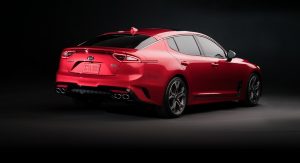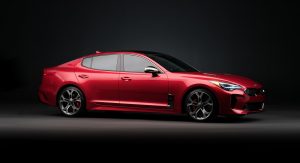Kia may have presented the Stinger at the 2017 Detroit Auto Show, but the Korean company says it’s not done yet testing the new fastback sedan.
A development team was sent to northern Sweden with the new vehicle to fine-tune its handling in both rear- and all-wheel drive configurations, including the characteristics of the electronic aids.
“Testing the car in these extreme conditions allows us to focus on the stability and predictability that the Stinger offers drivers, in every configuration, and in all driving conditions. Crucially, these tests allow us to engineer a car which retains the driving appeal that buyers look for in a sport sedan. We want enthusiastic drivers to be able to enjoy the thrill of driving their Stinger in all conditions, without compromising on safety“, said Kia’s Head of Vehicle Test and High Performance Development, Albert Biermann.
When it goes on sale in the second half of 2017, the all-new Stinger will be Kia’s first ever sedan available with a choice of either RWD or AWD. The latter models are fitted with an enhanced Dynamic Torque Vectoring Control system, which can apply power and braking force to the wheels, to ensure grip is maintained on all surfaces. The RWD versions, on the other hand, will come with an optional mechanical limited-slip differential, while the 3.3-liter cars will get switchable ESC and TCS in the Sport mode.
With this engine, the Kia Stinger can sprint from 0 to 100 km/h (62 mph) in 5.1 seconds, courtesy of the 370 PS (365 HP) and 510 Nm (376 lb-ft) of torque produced. There is also a 2.0-liter four-cylinder turbocharged unit available, developing 255 PS (251 HP) and 353 Nm (260 lb-ft) of torque, along with a 2.2-liter turbodiesel, rated at 200 PS (197 HP) and 440 Nm (325 lb-ft) of torque for the European market. All units are paired with an 8-speed automatic gearbox as standard.













